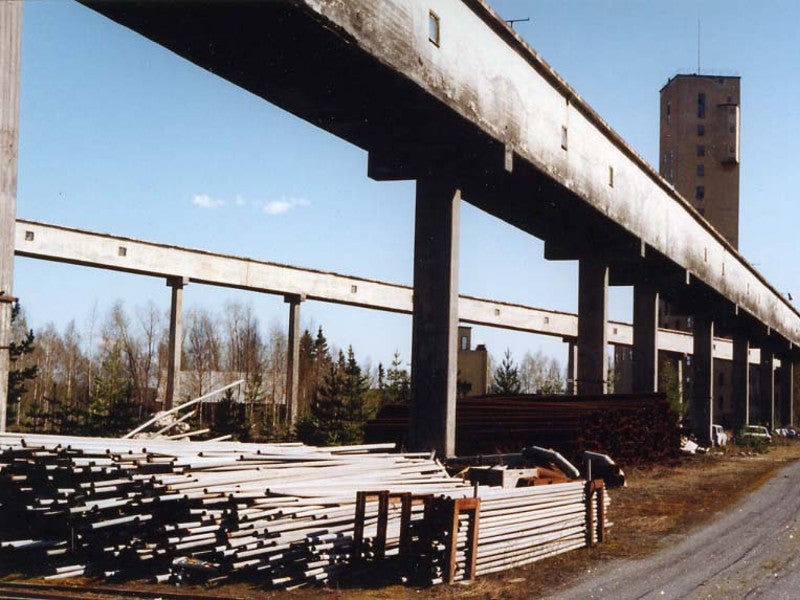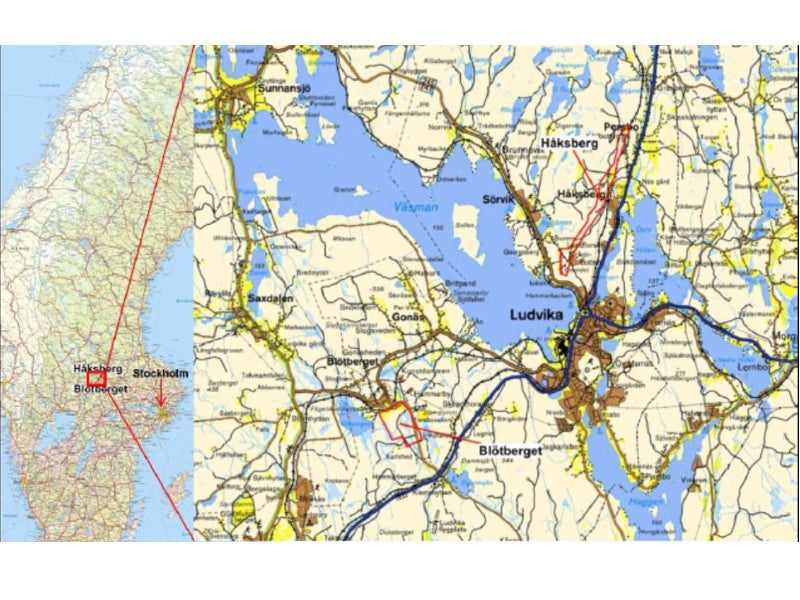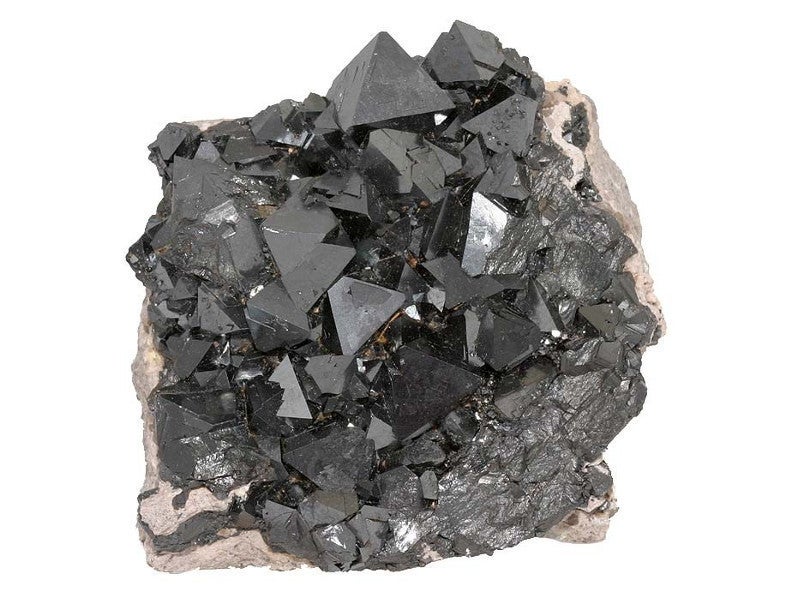The Blotberget iron ore project is an underground iron ore mine being developed in Dalarnas County, Sweden by Nordic Iron Ore.
Blotberget is a historical mine along with the Vasman mine near Ludvika that were operated by the Swedish-Finnish company SSAB until 1979.
Blotberget will be the first deposit to be redeveloped by Nordic Iron Ore as part of its larger Ludvika mines development plan that also includes the Vasman and Haksberg deposits.
The company completed a feasibility study for the Blotberget project in October 2019 which calls for a three million tonnes per annum (Mtpa) underground mining operation over an estimated mine life of 12 years.
The estimated capital expenditure for the project is £197m ($255m) and the iron ore mine is expected to commence production in 2022.
Ludvika mines development background
Nordic Iron ore secured exploration permits for the iron ore deposits in Ludvika mines area in 2008.
It was granted mining concession for the Blotberget deposit in August 2011, while the mining license for the Haksberg deposit was secured in the same year in December.
Subsequently, the mining concession for the southern part of the Vasman was received in December 2017.
The environmental permit for the Blotberget project was received in the first quarter of 2014.
Nordic Iron ore was also granted exploration permit for an area covering 453ha adjacent to the Blotberget mining concession in February 2020.
Location, geology, and mineralisation
The Blotberget project is located in Dalarnas County within the Bergslagen mining district in south-central Sweden.
The Blotberget deposit is made up of three east-west trending mineralised bodies namely, Kalvgruvan, Hugget/Flygruvan and Sandellmalmen.
The Blotberget ore bodies feature apatite-iron-oxide mineralisation containing magnetite and hematite.
Blotberget iron ore reserves
The Blotberget mine is estimated to contain 34.1Mt of recoverable reserves grading 36.27% Iron (Fe) that include 29.4Mt of proven and 4.6Mt of probable iron ore reserves.
The measured and indicated resources are estimated to be 55.07Mt grading of 40.7% Fe. The magnetite and hematite ratio in the Blotberget iron ore is estimated at 62%:38%.
Iron ore production from the Blotberget mine
The Blotberget project is expected to process up to 3Mtpa of run-of-the-mine ore to produce 1.4Mt of saleable magnetite and hematite iron ore concentrates a year.
Mining method
Blotberget will be an underground mining operation utilising post pillar cut and fill (PPCF) mining method.
The underground mine will be accessed via an 8m-wide and 5.7m-high, 1:7 gradient decline which will extend 280m below ground level before spitting into a truck and a conveyor decline further extending deeper below ground.
The truck decline will extend up to 820m below ground to reach the production faces of the mine, while the conveyor decline will extend to connect an underground primary crusher station.
The extracted ore will be transported in 65t trucks to the grizzly feeder of the underground primary crusher where it will be crushed to 250mm size.
The crushed ore will be brought to the surface via a conveyor system, while the waste rock will be transported to the surface by mine trucks.
The waste rock will be stockpiled for future crushing and used as backfill material for the underground mine.
Iron ore processing
The run-of-the-mine (ROM) crushed ore from the underground mine will undergo secondary crushing in a cone crusher and grinding in high pressure grinding rolls at a processing facility on the surface.
The fine ore material will undergo a three-stage magnetic separation process for the recovery of magnetite and hematite.
In stage one, the magnetic components including the associated gangue minerals will be separated from the hematite-containing non-magnetic components.
The magnetic materials will be reground and passed through cleaner separation and floatation to obtain magnetite concentrates, while spiral concentrators, as well as rougher and cleaner gravity separation processes, will be employed to recover hematite concentrates.
Phosphorus-containing apatite will be removed from the magnetite and hematite concentrates through a reverse flotation process.
The pure concentrates will then be thickened and filtered prior to storage for sale.
Infrastructure facilities
A 15MW power supply connection for the mine has been approved. A 12kV distribution substation at the mine site will be fed with electricity through a 50kV transmission line operated by VB Energi.
The iron ore concentrates from the mine will be loaded into trains at the Skeppmora terminal from where it will be railed for approximately 270km to the Oxelosund port for shipping.
Other infrastructure facilities at the mine site will include a tailing storage facility (TSF), explosive and fuel storage facilities, workshops and administrative buildings.
Contractors involved
Golder Associates, an engineering and consulting firm based in Canada was engaged to prepare the feasibility study for the Blotberget iron ore project in May 2018.
Australia-based DMT Consulting provided the mineral resource estimates for the project in July 2017.





